SHTF communications plan is a way to communicate and plan for survival when traditional methods fail. You’ll need to prepare well with the necessary gear, such as a 3-3-3 radio, NOAA radio, and Citizens Band (CB) Radio. Other than that, the most reliable mediums include HAM radio, US VHF Radio, and FRS/GMRS.
Although these are important, you should also consider getting a power backup solution, and Jackery Solar Generators is one of the best out there. Their battery capacity is enough to power most household and medical appliances, as well as communication tools.
Key Takeaways
- To prepare yourself well, understand the SHTF warning signs, such as hours-long power outages, media blackouts, a diving stock market, and others.
- Determining the right communication method and message is crucial to ensure the recipient understands it well and takes action accordingly.
- There are four types of communication: personal communication, impersonal communication, coded communication, and telecommunication.
- Some necessary gear for SHTF communications include 3-3-3 radio, NOAA weather radio, CB radio, FRS/GMRS, HAM radio, US VHF radio, cell phone, satellite phone, and walkie-talkies.
Understanding Warning Signs
Most SHTF events have warning signs. These help identify the trigger points so you can take necessary actions, such as moving personnel and equipment to a predetermined location, topping off rechargeable batteries, checking generators, etc. Also, ensure your vehicles are filled with gas, have enough cash, and test various communication methods.
Here are the warning signs or trigger points that indicate SHTF events might be imminent:
- People lose their sanity, i.e., rioting, fighting, looting, etc.
- Power outage on a regional scale for more than a week.
- Media blackout (censorship of certain topics, whether voluntary or government-mandated)
- The stock market takes a sudden nosedive by 10% or more in a single day.
- When governments or agencies are making attempts to isolate certain parts of society (mainly during a pandemic)
- You can’t withdraw any cash from banks or other financial institutions.
- When there are warnings about the incoming of something acute (like a hurricane)
- First responders, healthcare workers, and infrastructure workers don’t show up for work.
- Martial law has been imposed, which means something terrible has already happened, and the government anticipates further similar events.
But your preparedness varies with the levels, so it’s vital to ascertain the one you’re in and take action accordingly.
|
Level |
Action |
|
1- Active Incident |
● Conduct AmRRON nets according to the set Emergency net schedule. Make the tweaks according to the situation. ● If you don’t hear any net starting, announce that you’re on standby. ● Go ahead and transmit the information you have, irrespective of anyone present on the network. ● Monitor all bands according to the set net schedule unless you hear otherwise. |
|
2-Incident Imminent |
● Communication disruptions are likely. ● Conduct trial “net” runs among various networks (group, regional, or national) depending on the situation. ● Establish a net schedule that best fits the situation. ● Keep your group briefed on ongoing developments. ● Prepare your equipment for operation or evacuation. ● Review radio operations and maintain connections with your group through unconventional methods. |
|
3-Incident Probable |
● Probable interruption in conventional communication methods. ● Keep your comms ready if the emergency hits. ● Track radio traffic and increase frequency to keep the communication route clear. ● Stay prepared for evacuation- check on the fuel, batteries, backup, etc. |
|
4- Incident Possible |
● Possible communication interruption in the near future ● Keep all the communication equipment ready ● Monitor the situation and respond immediately to any new developments. ● Contact your close ones to update them about the situation. Continue using phone and email until they’re available. ● Continue with regularly scheduled nets. |
|
5-No Incident |
● Communication interruptions aren’t expected ● Conduct scheduled nets- weekly or monthly ● Monitor the radio frequency regularly to avoid any potential disruptions. ● Develop and expand current nets and training sessions. |
What Is the SHTF Communication Plan
SHTF, or Shit Hits The Fan, refers to a situation when disorder or chaos prevails after a major disaster. It encompasses a wide range of scenarios like hurricanes, pandemics, earthquakes, economic collapses, or political unrest. The term was devised in 1930, which means problem (shit) piles up (hits the fan), or when it gets real.
It’s crucial to stay prepared for such emergencies, and communication is one of the primary aspects. SHTF communications and plans are ways to communicate and prepare for situations when conventional communication methods fail. Ham Radio isn’t discussed much on survival websites, but it plays a crucial role in preparedness during these times.
Knowledge is the most valuable asset in a survival situation. Knowing what’s going on around you gives you a leg up in these situations. For that, you must be able to connect and send and receive information.
However, the key to SHTF communications is to stay on one frequency so someone can easily find you in your communications. Having a matrix where you change your frequency continuously makes it challenging to find you, especially with HF, whose usable frequencies change during the day as the sun heats the atmosphere.
Another influence on HF communications is the antenna you’re using, one that catches the desired frequency and is easy to take down post-SHTF. It’s essential to prepare a communication plan before a level 1 condition and share it with other group members. The communication plan should properly deliver a clear and concise message to the concerned personnel.
Basics of a SHTF Communication Plan
Now that you’ve planned to tackle the situation and under what conditions you make contacts, it’s essential to determine how you’ll communicate with them. It’s of paramount importance in a communication plan.
Determine the Communication Method: Irrespective of your chosen method, if your group isn’t listening or looking at what you’re telling them, they might not get the message. For example, there's no point if you plan to communicate via a CB radio, and others aren’t aware of what channel to listen to or the time you’re calling out.
Confirm Proper Message Delivery: If you’ve been calling out but not getting a response, it can be tricky to determine if the message was delivered correctly. To deal with this, be preemptive and establish predefined phrases or codes to confirm receipt of messages. For example, the recipient responds with a specific number or word to acknowledge receipt. Repeat the messages to ensure the recipient gets it all.
Ask Questions: Let’s say you’re communicating that you’re meeting the recipient as a part of your plan, so you need to know:
- Who is to meet?
- What are you bringing?
- What you must do before the meeting?
- Which location are you supposed to meet?
- What time do you reach the location?
- What to do if things change?
You must communicate these things to ensure the plan is executed well and you all are safe in these situations.
Purpose of a SHTF Communication Plan
The primary purpose of communicating with someone as a part of your SHTF communication plan is as follows:
- To initiate or move to a phase of the plan
- To communicate or acknowledge that a phase has begun or changed
- To pass information about your current status- a situation report (SERP)
These should be the reasons, and if there’s anything else, you didn’t prepare your plan well. So, reconsider the aspects that are involved and make the necessary amendments. Also, it’s crucial to establish a plan that is simple enough to remember and follow and flexible enough that you can adjust it if things go sideways.

Types of SHTF Communications
Now that you’ve understood the basics of SHTF communications, it’s time to put them into practice. There are four ways to communicate with the people concerned: personal communication, impersonal communication, coded communication, and telecommunication. Let’s understand them in detail:
Personal Communication
As the name says, personal communication is when you see the person you’re talking to. It’s probably the best form of communication as you can properly explain the plan to them and ensure they understand it well. Personal communication can be verbal and non-verbal and depends on whom you’re talking to and the situation.
Impersonal Communication
It is when you and the recipient are not at the same place simultaneously, and the communication isn’t simultaneous. For example, leaving a note for someone or sending a pre-recorded video is impersonal. Although the message might reach the concerned personnel, you must consider a few things:
- Something or someone might interfere with the method, so your message doesn’t get through, so keep track of it until it reaches the recipient.
- Make sure to frame the message or tweak the concerned pathway so the person can recognize you as the sender.
- Accomplish the requisite steps to communicate and ensure the message reaches the concerned person.
Telecommunication
Technically, telecommunication communicates through any form of electromagnetic spectrum, for example, ham radios, cell phones, CB radios, GMRs, etc. Tap code or beating a drum uses soundwaves, which aren’t a part of the electromagnetic spectrum but can still be used to communicate with people far away and can be considered telecommunication.
During emergencies, ham radios are the best communication medium, as cell towers aren’t always available, and the range of CB radios is limited. It requires some learning, and you need a license for it, but unlike others, they can communicate over long distances and have a higher power output.
Coded Communication
For emergency communications, coded messages are something only you two understand without anyone else overseeing or overhearing. It’s simply some form of subterfuge in your communication.
To communicate in code, whether impersonal, in-person, or telecommuting, you must have a set of code words laid out in your communication plan from the beginning. The more complicated your coding is, the tougher it is for others to perceive your message and mess up. But making it overly complicated gives away the idea that you’re talking in code.
If done correctly, you can communicate without anyone knowing what you are planning for emergencies.
Gear for SHTF Communications
During emergencies, the likelihood is that most conventional communication channels will go down. Even if it’s temporary, you must plan for worst case scenario and have multiple backup options available:
3-3-3 Radio
3-3-3 Radio is a “when, where, and how” to make radio contact with each other during SHTF. Also known as the “survival rule of three,” the radio schedule or SKED is used by preppers, survivalists, and emergency communication groups worldwide. Its basic principle is to turn on your radio every 3 hours for at least 3 minutes on channel 3.
- When: Every 3 Hours: Use your local time to communicate with the 3-3-3 radio plan, and turn on the radio every three hours at the top of the hours, i.e., at 3 pm, 6 pm, and 9 pm at noon, and 3 am, 6 am, and 9 am at midnight.
- How Long: At least 3 Minutes: Turn on your radio every third hour, and even if you don’t need to make a call or listen to calls, keep it on for at least three minutes. If there’s enough battery or you haven’t listened to calls for a while, keep it on for around 15 minutes, as you never know when someone’s trying to reach you or needs help.
- Where: Channel 3: Channel 3 includes FRS-3, CB-3, or MURS-3. FRS, CB, and MURS are the common radios preppers and survivalists use. If your group has set a different SHTF channel or frequency, you must use it as your 3-3-3 channel.
NOAA Weather Radio
NOAA Weather Radio is the radio station broadcasting continuous weather information directly from NWS (National Weather Service) offices nationwide. These broadcasts are tailored to provide specific information to a set of people in the area of a NOAA transmitter. There are 400+ NOAA transmitters in Puerto Rico, the United States, Guam, the US Virgin Islands, and Saipan.
Each transmitter has a range of around 40 miles from each site, and around 80% of the country, encompassing 95% of the population, is within the transmission range. In severe weather in certain areas, local Ham radio operators call in on specific frequencies and update NOAA with weather reports from the location.
Aside from typical AM/FM radio bands, NOAA operates in seven frequencies, and unlike Ham radio, you don’t need a license to own a NOAA radio or monitor their transmissions. Here’s a list of NOAA frequencies:
- 400
- 425
- 450
- 475
- 500
- 525
- 550
Citizens Band Radio
Citizens Band (CB) Radio has been around for a long time and has gained immense popularity with truckers and almost everyone at some point. Since 1977, there have been 40 channels; some have single-sided bands, while others have NOAA channels and even Bluetooth capability.
It’s the most popular in Canada and the United States, which has plenty of over-the-road truckers and most utilize CB radio. When talking or listening to them, you’ll learn the location of weather hazards, traffic jams, roadway obstructions, mobile law enforcement, good food, and much more. They primarily use Channel 19, which is recognized as the Emergency channel. You don’t need a license to operate at any CB frequency in the United States.
Here is the list of important CB channels:
|
CB Channel |
Frequency |
Frequency Use |
|
Channel 3 |
26.985MHz |
Prepper CB Network |
|
Channel 4 |
27.005MHz |
4X4 clubs like TAPRN (The American Pepper’s Network) |
|
Channel 6 |
27.025MHz |
Operators with illegal linear |
|
Channel 9 |
27.065MHz |
REACT/Universal CB emergency channel |
|
Channel 11 |
27.085MHz |
Local calling channel |
|
Channel 13 |
27.115MHz |
For RVs, marine, and campers |
|
Channel 14 |
27.125MHz |
Federal Motor Coach Association uses it |
|
Channel 15 |
27.135MHz |
Truckers in Canada |
|
Channel 16 |
27.155MHz |
Many 4X4 clubs |
|
Channel 17 |
27.165MHz |
Truckers in Canada's east-west roads |
|
Channel 19 |
27.185MHz |
Unofficial primary trucker channel |
|
Channel 20 |
27.205MHz |
Open to everyone |
|
Channel 21 |
27.215MHz |
Truckers in Canada's North-South routes |
|
Channel 30 |
27.305MHz |
For SSB |
|
Channel 35 |
27.355MHz |
Australian calling channel |
|
Channel 36 |
27.365MHz |
USB calling channel |
|
Channel 37 |
27.375MHz |
Prepper 37 (USB) |
|
Channel 38 |
27.385MHz |
LSB calling channel |
|
Channel 39 |
27.395MHz |
SSB |
|
Channel 40 |
27.405MHz |
SSB |
FRS/GMRS
Family Radio Service, or FRS, was adopted in 1996 for use by families, and since then, it’s been adopted by many businesses for their daily communications. It is an upgrade to a regular walkie-talkie as its allotted frequencies are channelized, and ultra-high frequency is used to eliminate undesirable transmissions.
There are 22 FRS/GMRS channels, of which 1-7 are shared by both, 8-14 are for FRS, and 15-22 are for GMRS only. It’s worth noting that FRS doesn’t need a license, while GMRS requires an FCC license. Here’s a list of channels and respective frequencies:
|
Channel |
Frequency |
Use |
|
1 |
462.5625MHz |
FRS/GMRS |
|
2 |
462.5875MHz |
FRS/GMRS |
|
3 |
462.6125MHz |
FRS/GMRS |
|
4 |
462.6375MHz |
FRS/GMRS |
|
5 |
462.6625MHz |
FRS/GMRS |
|
6 |
462.6875MHz |
FRS/GMRS |
|
7 |
462.7125MHz |
FRS/GMRS |
|
8 |
467.5625MHz |
FRS |
|
9 |
467.5875MHz |
FRS |
|
10 |
467.6125MHz |
FRS |
|
11 |
467.6375MHz |
FRS |
|
12 |
467.6625MHz |
FRS |
|
13 |
467.6875MHz |
FRS |
|
14 |
467.7125MHz |
FRS |
|
15 |
462.5750MHz |
GMRS |
|
16 |
462.6000MHz |
GMRS |
|
17 |
462.6250MHz |
GMRS |
|
18 |
462.6500MHz |
GMRS |
|
19 |
462.6750MHz |
GMRS |
|
20 |
462.7000MHz |
GMRS |
|
21 |
462.7250 |
GMRS |
HAM Radio (CB)
Unlike FRS/CB radios, operating HAM radios requires a license, which comes in three levels: Entry-level or Technician, Mid-level or General Class, and Advanced-level or Amateur Extra. Many HAM frequencies, also referred to as bands, are allocated for amateur use and start at high frequency at 160 meters and continue up to 300GHz radio spectrum. Here’s a list of bands:
|
Meters |
Frequency |
|
160 Meters |
1.800 – 2.0000MHz |
|
75/80 Meters |
3.5000 – 4.0000MHz |
|
60 Meters |
5330.5– 5403.5MHz |
|
40 Meters |
7.0000 – 7.3000MHz |
|
30 Meters |
10.0000 – 10.1500MHz |
|
20 Meters |
14.0000 – 14.3500MHz |
|
17 Meters |
18.0680 – 18.1680MHz |
|
15 Meters |
21.0000 – 21.44500MHz |
|
12 Meters |
24.8900 – 24.9900MHz |
|
10 Meters |
28.0000 – 29.7000MHz |
|
6 Meters |
50.1000 – 54.0000MHz |
US VHF Radio (CB)
When traveling to coastal areas and along navigable waterways, you can monitor the weather on US VHF Radio. You need a license to use the radio, and here’s a list of a few crucial frequencies:
|
Channel Number |
Ship Transmit |
Ship Receive |
Use |
|
01A |
156.050MHz |
156.050MHz |
Commercial and Port Operations in New Orleans |
|
09 |
156.450MHz |
156.450MHz |
Commercial, Boater Calling, and Non-commercial |
|
13 |
156.650MHz |
156.650MHz |
Internship Navigation Safety |
|
14 |
156.700MHz |
156.700MHz |
VTS and Port Operations |
|
15 |
- |
156.750MHz |
Environmental |
|
20 |
157.000MHz |
161.600MHz |
Duplex port operations |
|
20A |
157.000MHz |
157.000MHz |
Port operations |
|
21A |
157.050MHz |
157.050MHz |
U.S. Coast Guard |
|
23A |
157.150MHz |
157.150MHz |
U.S. Coast Guard |
|
65A |
156.275MHz |
156.275MHz |
Port operations |
|
66A |
156.325MHz |
156.325MHz |
Port operations |
|
68 |
156.425MHz |
156.425MHz |
Non-commercial |
|
69 |
156.475MHz |
156.475MHz |
Non-commercial |
|
70 |
156.525MHz |
156.525MHz |
Selective calling |
|
71 |
156.575MHz |
156.575MHz |
Non-commercial |
|
72 |
156.625MHz |
156.625MHz |
Non-commercial (Internship only) |
|
78A |
156.925MHz |
156.925MHz |
Non-commercial |
|
81A |
157.075MHz |
157.075MHz |
U.S. Government |
|
82A |
157.125MHz |
157.125MHz |
U.S. Government |
|
83A |
157.175MHz |
157.175MHz |
U.S. Coast Guard |
Cell phone
Unlike the aforementioned options, cell phones are something most people have. While chances are your cell towers are overwhelmed by disaster, they’re your first line of communication. Even if things go bad, they might help you communicate through voice calls and text, as you might have observed in past disasters.
Satellite phones
Although expensive, satellite phones can be your savior during natural disasters or crises. These offer several advantages, including reliance on local cell networks, which makes them less vulnerable. Besides that, even if the cell network goes down, your satellite phone will still likely be operational.
Walkie talkies
Walkie-talkies are a great way to communicate easily with your immediate family and save their lives in dire situations. Arm your family with these short-range communication radios so you can stay in touch with them even when you are separated.
Power Supply: Jackery Solar Generator
Power outages and blackouts are common during natural disasters or emergencies, so having a reliable and efficient Jackery Solar Generator can greatly help. These generators are portable and have enough battery capacity to power your home appliances for a few days.
Jackery Solar Generators for SHTF
Jackery is a leading manufacturer of solar generators, solar panels, and portable power stations. The Jackery Solar Generators combine foldable Jackery SolarSaga Solar Panels and Jackery Explorer Portable Power Station to collect, convert, and supply electricity to household appliances.
Jackery Solar Generators have high battery capacity to power most household appliances during extended power outages and blackouts. The Jackery Explorer Portable Power Stations includes multiple AC/DC ports to plug in multiple appliances simultaneously.

Jackery Solar Generator 3000 Pro
Jackery Solar Generator 3000 Pro, with its large battery capacity, can charge up to 99% of your household appliances, including refrigerators, mobile phones, radios, and more. So, irrespective of extended blackouts or power outages, it serves as your valuable companion. Its double wheels and pull roads make it move around the house.
Appliances Running Hours
- Coffee Maker (1300W): 1.9H
- Television (60W): 42.8H
- Portable Air Conditioner (1150W): 2.2H
- Computer (100W): 25.7H
- Refrigerator (600W): 4.3H

Customer Review: “This Generator is a game changer. The battery lasts for hours. Solar panels work great and can be used ANYWHERE.”- Kenny Barrett.
Jackery Solar Generator 2000 Plus
Jackery Solar Generator 2000 Plus is an expandable and versatile generator that powers 99% of your household appliances. The standalone device can charge most essential equipment, such as lights, smartphones, and medical equipment like CPAP machines.
Appliances Running Hours
- Television (60W): 28.9H
- Portable Air Conditioner (1150W): 1.5H
- Computer (100W): 17.3H
- Refrigerator (600W): 2.9H

Customer Review: “Very good quality, battery lasts a very long time. Very easy to move around with the built-in tires. Love the upgradeability. The best solar generator I have ever had.”-Marc.
Jackery Solar Generator 1000 Plus
If you need a comparatively small battery backup to power up your household appliances for a certain time, then Jackery Solar Generator 1000 Plus is a great pick. You can charge it up with solar panels in no time and power the basic communication appliances like radios, smartphones, etc., to emerge as a reliable companion for long power cuts during SHTF.
Appliances Running Hours
- Refrigerator (600W): 1.8H
- Computer (100W): 10.8H
- CPAP Machine (80W): 13.4H
- Smartphone (60W): 17.9H

Customer Review: “Great to have on hand for emergencies. Charged up quick with the solar panels.”- Joe
How to Set Your SHTF Communication Plan
Before setting up your communication plan, you must understand its essential elements: clear, complete, unambiguous, concise, and confirmed.
- Clear: It’s important that the recipient gets your message, which means hearing it clearly and understanding its intent. Choose your words and medium carefully to ensure there is no misunderstanding.
- Complete: Ensure that you tell the whole story. If you skip even a tiny part, they might misunderstand your message and don’t take the necessary actions.
- Unambiguous: Don’t assume that the listener knows what you are talking about, and convey the message in detail. For example, if you ask someone to go to circle-K on the main street, they might end up on a different circle-K.
- Concise: Now that you’ve figured out how to convey your message clearly, ensure it’s as succinct as possible. Communication in emergencies can get spotty, and with many things going on in people’s minds, keeping it concise helps them understand and remember it well.
- Confirmed: As you convey the message, make sure the listener hears and understands it well. For that, try repeating the message or asking them to show any signs to demonstrate that it went well.
Now you understand the basic yet crucial elements of communication, establish a PACE principle to achieve resilience. So, apply the Primary, Alternate, Contingency, and Emergency principles to establish a proper communication plan. Here’s how:
- Primary can be the channel you typically use for communication, such as an online messenger group (on WhatsApp, Messenger, Viber, etc.)
- Alternate can be an additional channel you can interchange with primary, in case it doesn’t work. For example, you can message through cellular phones instead of the Internet.
- Contingency is the less-used solution in case the first two fail. For example, you can use radios if your cellular network goes down. Or you can convey your message through an intermediary.
- Emergency is the last resort when nothing works. It can be RF-based and is used to improve communication for emergency responders during emergencies.
As you have a clear idea about what and how to communicate, here are a few suggestions for your emergency communication plan:
- Get a Ham license to use a ham radio to communicate your messages.
- Join RACES, ARES, or another group to help the community by using amateur radio during emergencies.
- Don’t wait for an emergency to start using a ham radio or other communication system.
- Establish good relations at certain frequencies so that you can reach out when required.
- Communication should be at the top of your survival plan. Pack a hand-held radio, batteries, cell phones, and a Jackery solar generator to power your radios and other appliances.
Exercise Your SHTF Communication Plan
You can’t wait for emergencies to exercise your communication plan, so here are a few ways to exercise them:
- Participate in scheduled events on a repeater’s simplex frequency to feel comfortable communicating and operating in a group. You can also establish connections with like-minded people who can help.
- Involve in public service events such as endurance races to practice your skills.
- Speak clearly and slowly, and keep the messages short and to the point.
- When answering the radio, use phrases like “over” to indicate you’re done speaking, “say again” to ask for a repeat, and similar ones.
- Understand the 3-3-3 plan and practice it regularly.
Exercising your SHTF communication plan is important as it helps ensure that you and your team communicate effectively during emergencies when traditional methods fail. This way, you can act quickly and help your group stay safe.
SHTF Communications Plan FAQs
What size of solar generator do I need for an emergency?
Your solar generator’s size depends on the number of appliances you power with it and for how long. For example, you’re running a television (60W), computer (100W), and refrigerator (600W) on a Jackery Solar Generator 3000 Pro.
So, Working Hours = Battery Capacity in Wh * 0.85 / Wattage Consumption of the Appliances
Working Hours = 3024Wh * 0.85/760W = 3.4H
Note: The battery capacity is multiplied by 0.85 to factor in the power loss during charging the appliance.
Are cell phones good enough for a SHTF?
When SHTF happens, cell towers typically go down and won’t work. But if they do, they can be a good enough communication medium.
What is the best communication device for SHTF?
Emergency radios are the best communication device for SHTF.
What communication do preppers use?
Preppers might use ham radios, two-way radios, walkie-talkies, or similar during SHTF.
What is the 3 3 3 rule radio?
3-3-3 rule radio is an emergency radio schedule where ham radio preppers listen to the radio every 3 hours for at least 3 minutes on channel 3.
SHTF Communications
During SHTFs, communication should be an intimate part of your bug-in or bug-out plan. A quality SHTF communications plan is important as it helps ensure survival. You can check in with your friends and family, let them know where you are, and plan to safely come together to secure your neighborhood. But with extended blackouts and power outages, Jackery Solar Generators is a reliable companion. These can power up your radios, smartphones, and other similar devices to stay connected during emergencies.

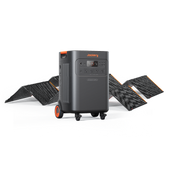











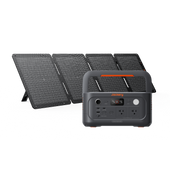



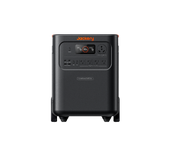
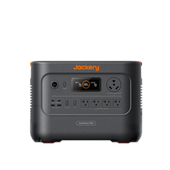





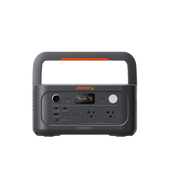





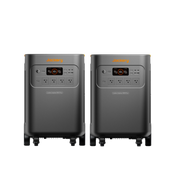
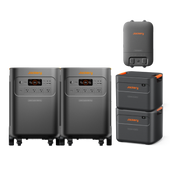





![[Add - on] Jackery Manual Transfer Switch for Explorer 5000 Plus - Jackery](http://www.jackery.com/cdn/shop/files/add-on-jackery-manual-transfer-switch-for-explorer-5000-plus-9017324.png?v=1754016782&width=170)
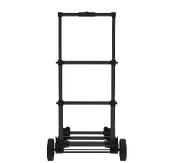
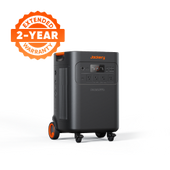
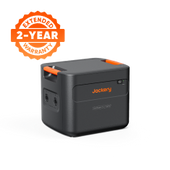
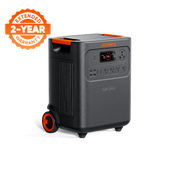
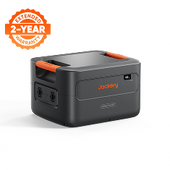
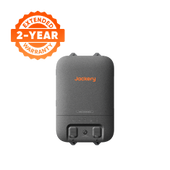



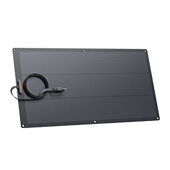
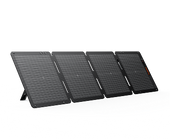




















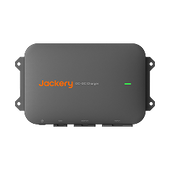




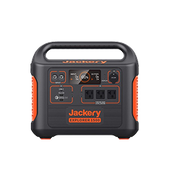






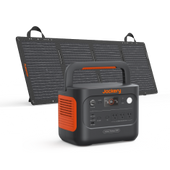
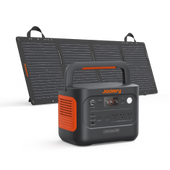






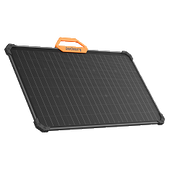


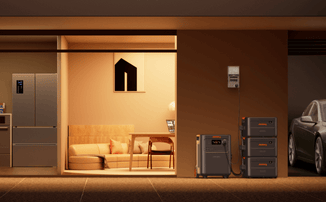














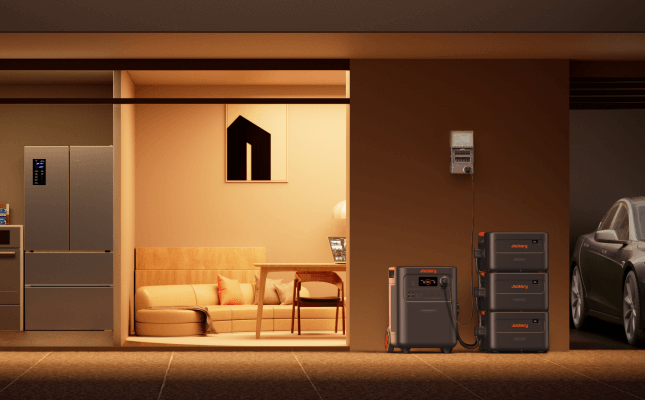


















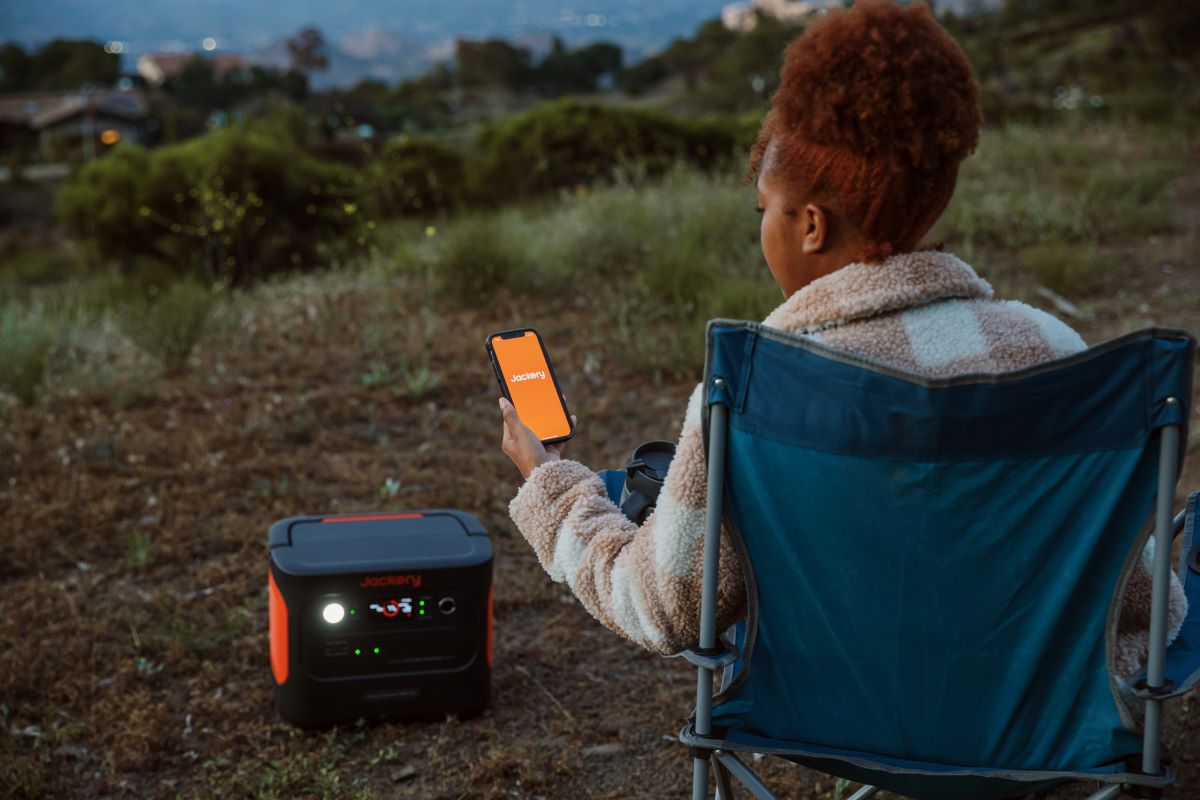







Leave a comment